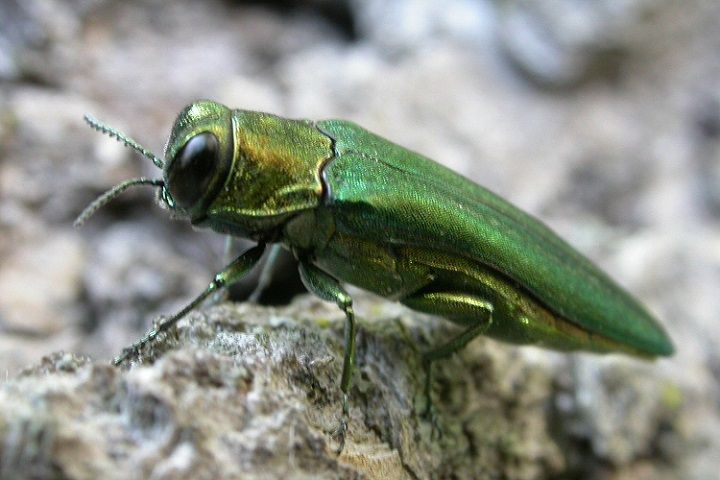Winnipeg’s ash tree population is under threat.

The emerald ash borer, an invasive beetle that has been expected with nervous anticipation for a decade, was discovered in three trees in St. Boniface just before Christmas.
The city is now putting wheels in motion to protect its trees – there are an estimated 350,000 ash trees in Winnipeg on public and private property.
READ MORE: Emerald ash borer beetle found in Winnipeg
On Wednesday, experts from Ontario helped lead workshops for city foresters detailing how to sample branches and survey tree populations.
Identifying trees infected by ash borers is a skill the foresters need to pick up immediately. Dr. Krista Ryall, Forest Ecological Entomologist with Natural Resources Canada, led the training, which involved peeling back bark and looking for signs of larvae.
“We think what’s happening is people are exacerbating the spread of this insect,” Dr Ryall said.
“People moving firewood is a major problem that we have. I would suspect that maybe what we’re seeing here, somebody brought some camp firewood from an infected area.”
She noted ash trees can look very healthy despite the presence of the beetle, which has been known to devastate ash populations in eight to ten years after it’s first detected in local trees.

Get breaking National news
Winnipeg’s plan is to work with other municipalities who have encountered the emerald ash borer in years past to develop a management plan.
“Even if we can’t get ahead of it just yet, we can at least slow down the trajectory,” Dr. Ryall said.
She said Winnipeg’s cold temperatures may help give the city a handle on protecting its trees, as the winters could kill off beetles in their earlier stages of development.
“What we’re looking at is a combination of removals and tree injections,” Martha Barwinsky, forester with the City of Winnipeg, said. “Essentially it’s removing the trees that are known to be infested and then injecting trees with a systemic insecticide for trees that are in very good condition, as a means of trying to preserve the ash trees and slow or manage the mortality and removals required in the future.”
PHOTO GALLERY: view images of the training offered to Winnipeg foresters
“Visually, it’s very difficult to detect emerald ash borers,” Barwinsky said.
She said increased woodpecker activity is a sign a tree may be affected and recommended calling 311 to have a forester come and take a look at any trees people suspect are infested.
RELATED: Fight against Dutch elm disease reaching critical point in Winnipeg
Barwinsky’s main tip for preventing the spread of the emerald ash borer is not to bring firewood into the city.
“If you’re out at the cottage, don’t bring the firewood back in here. Don’t transport it all over the place, because it could be that you’re transporting infected firewood and you just don’t know,” she said.
“Even if camping or out at the cottage – even in the winter time – burn it where you bought it.”




















Comments